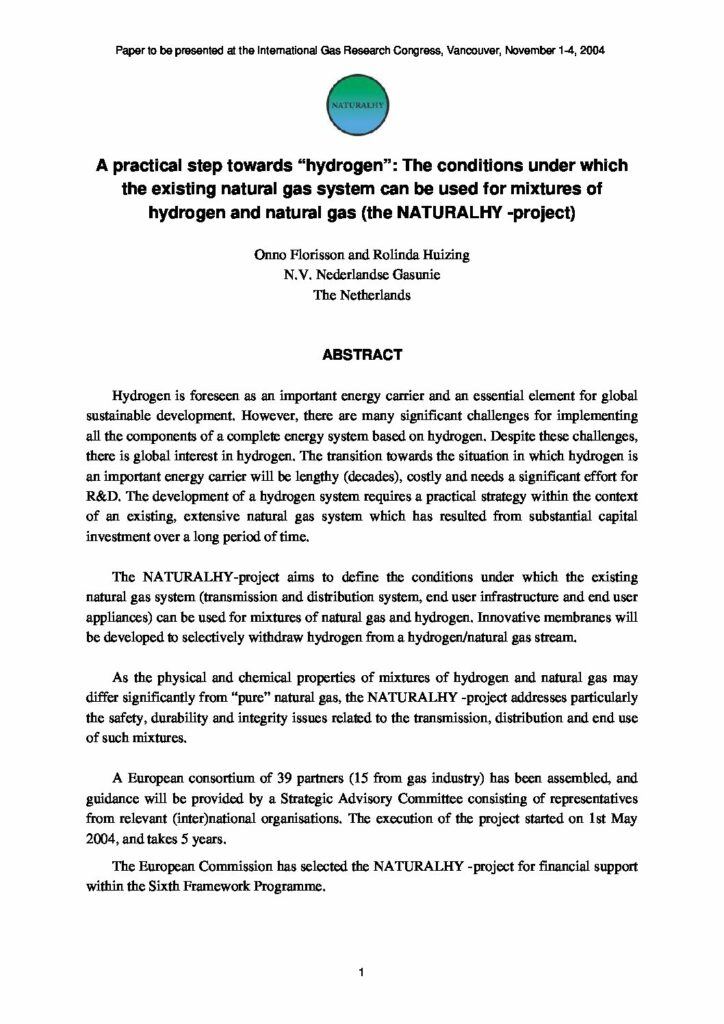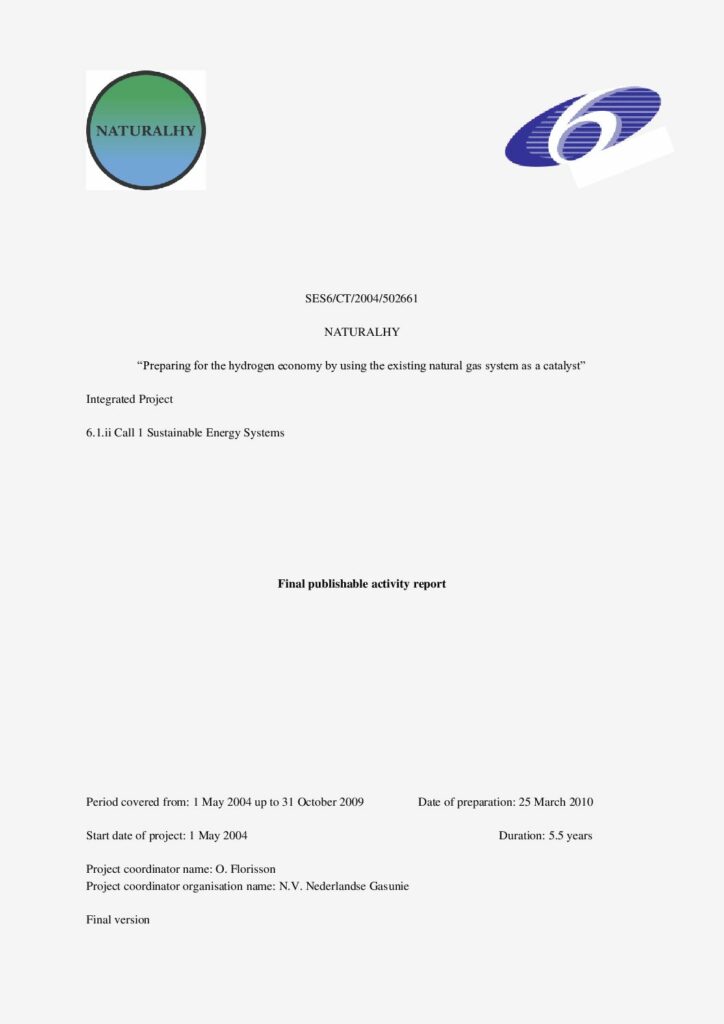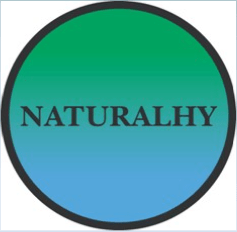GERG is one of the pioneering institutions in the hydrogen economy. It was in 2002 when this project started to be shaped with the intention of examinating the barriers that existed to, and the advantages that would accrue from the addition of hydrogen to the natural gas transmission and distribution system.
At this time, with the Kyoto targets already set, our groups of experts in GERG were already interested in the environmental advantages that the distribution of hydrogen would bring (even if the distributed mixture contained no more than 20% hydrogen). However, this was not a trivial exercise (and it is not yet nowadays) and it would require both considerable R&D effort and most importantly during these early years, changing the perception amongst the general public of reduced safety associated with hydrogen.
As a consequence, NATURALHY addresses particularly the safety, durability and integrity issues related to the transmission, distribution and end use of such mixtures.
Therefore, the NATURALHY project focused on:
• Defining the conditions under which hydrogen could be added to natural gas in the existing natural gas system (transmission-distribution-end used infrastructure and appliances) with acceptable safety risks, impact on the integrity of the system and consequences of the end user. The main technical deliverable of the project concerned an expert system (the “Decision Support Tool”) which determined the maximum percentage of hydrogen that can be added to natural gas supplied in a well defined area and pinpointed the elements that limit the percentage.
• Developing membranes to separate hydrogen from hydrogen/natural gas mixtures.
• Assessing the socio-economic and Life Cycle aspects of the NATURALHY approach.
Inspired by Gasunie in the Netherlands and set up within the GERG framework, the NATURALHY project presented a large, integrated body of work that set the field for the current and future hydrogen economy. About 40 European partners studied how a transition to a hydrogen economy could be facilitated in a short timeframe based on use of the existing gas infrastructure to convey a natural gas/hydrogen mixture.
NATURALHY was an Integrated Project funded by the European Commission’s Sixth Framework Programme for research, technological development and demonstration (RTD) Preparing for the Hydrogen Economy by Using the Existing Natural Gas System as a Catalyst Project Contract.
A set of Work Packages (WPs) were defined within the project:
- WP1: Socio-economic and life cycle assessment (Warwick University)
- WP2: Safety (Loughborough University)
- WP3: Durability (Gaz de France)
- WP4: Integrity (Netherlands Organisation for Applied Scientific Research,TNO)
- WP5: End Use (Warwick University)
- WP6: Decision Support Tool (Instituto de Soldadure e Qualidade, ISQ)
- WP7: Dissemination (EXERGIA, Energy and Environment Consultants S.a)
- WP8: Project management (Gasunie research)
The actual execution of the NATURALHY project started on the 1st of May 2004, and the duration of the project amounted to 5,5 years. The total project budget exceeds 17M€, while the European Commission’s contribution within the Sixth Framework Programme amounted to 11M€.
This project made a significant contribution to an enlarged Europe’s environmental aspirations whilst at the same time providing a logical stepping stone to the, at these years distant, hydrogen future in Europe.



